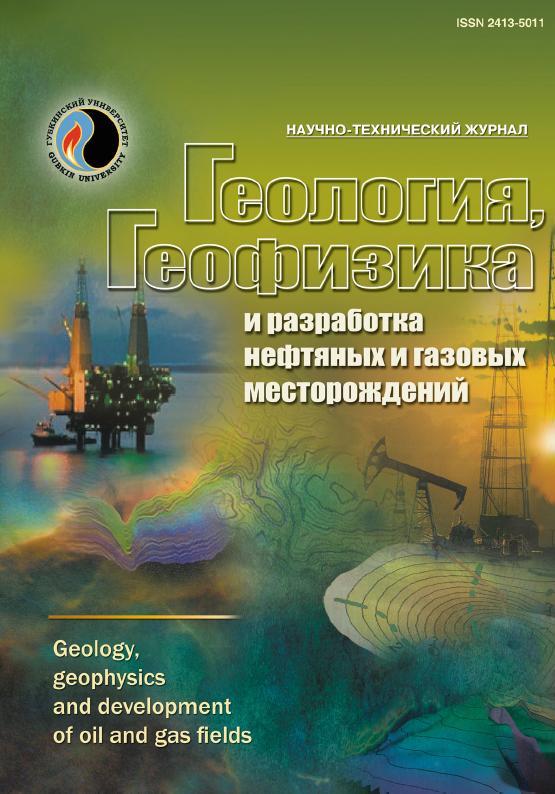Investigation of equivalent models by a fast signal simulator of the high-frequency induction logging module during drilling of the "Looch" telemetry system for horizontal wells
UDC: 550.837.63:550.822+550.8.072
DOI: -
Authors:
VLASOV ALEXANDER A. 1,2
1,2,
BYKOVA GALINA P. 1,2
1,2
1 Scientific-production enterprise of geophysical equipment "Looch", Novosibirsk, Russia
2 Novosibirsk State University, Novosibirsk, Russia
Keywords: high-frequency induction logging, horizontal well, equivalence ranges, numerical inversion
Annotation:
To obtain a higher hydrocarbon recovery rate it is required that the horizontal well should be drilled in the most productive upper part of the reservoir. To do this it is necessary to estimate the distance from the drilling bit current position in the reservoir up to the boundary between the productive part and cap rock.
Application of one-dimensional two-layer models for describing the near well-bore space of the horizontal well is studied by the deformable polyhedron method using the software module of the numerical inversion. The model parameters are determined through the numerical inversion based on high-frequency induction logging (HFIL) signals, then, by repeated simulation in the environment of the found solution the area of equivalent models that may make the obtained result inapplicable is identified. Approximation of pre-calculated signals is used to simulate signals in the environment of the found signal within the timelines acceptable while drilling.
It is revealed that in case of two-layer models the results of the numerical inversion based on searching the nearest local minimum by optimization algorithms may be inconsistent with the understanding of the well geology due to the equivalent models with significantly differing parameters.
Bibliography:
1. Eremin V.N., Volkanin Yu.M., Tarasov A.V. Apparaturno-metodicheskoe obespechenie elektromagnitnogo karotazha v protsesse bureniya // Karotazhnik. – Tver’, 2013. – № 4(226). – S. 62–69.
2. Aksel’rod S.M. Metody operezhayushchey navigatsii pri burenii gorizontal’nykh skvazhin (po materialam zarubezhnoy literatury) // Karotazhnik. – Tver’, 2012. – № 9(219). – S. 87–122.
3. Zhdaneev O.V., Zaytsev A.V., Prodan T.T. O vozmozhnostyakh sozdaniya rossiyskoy vysokotekhnologichnoy komponovki niza buril’noy kolonny // Zapiski Gornogo instituta. – 2021. – T. 252. – S. 872–884. – DOI: 10.31897/PMI.2021.6.9
4. Development of LWD High-Frequency Resistivity Tool / M.N. Nikitenko, M.I. Epov, V.N. Glinskikh [et al.] // 6th Saint Petersburg International Conference & Exhibition "Geosciences – Investing in the Future". Session: Well Logging and Core Analysis. – 2014. – P. 4. – DOI: 10.3997/2214-4609.20140177
5. Programmnoe obespechenie na osnove veb-tekhnologiy dlya geonavigatsii neftegazovykh skvazhin / K.N. Danilovskiy, A.R. Dudaev, V.N. Glinskikh [i dr.] // Vestnik NGU. Ser.: Informatsionnye tekhnologii. – 2019. – № 17(2). – S. 5–17. – DOI: 10.25205/1818-7900-2019-17-2-5-17
6. Dudaev A.R., Sobolev A.Yu., Glinskikh V.N. Programmnoe obespechenie s oblachnymi vychisleniyami dlya elektromagnitnogo karotazha v protsesse bureniya neftegazovykh skvazhin // XIX Nauch.-praktich. konf. "Geomodel’ – 2017". Voprosy geologorazvedki i razrabotki mestorozhdeniy nefti i gaza: rasshirennye tezisy dokladov. – Gelendzhik, 2017.
7. Netraditsionnyy podkhod k primeneniyu linearizovannoy inversii dannykh soprotivleniya v real’nom vremeni dlya zadach geonavigatsii v slozhnykh rezervuarakh / A.P. Mosin, V.S. Mogilatov, I. Kuvaev, I.B. Uvarov // Gorizontal’nye skvazhiny. – Kaliningrad, 2019. – S. 3–13.
8. Gorbatenko A.A., Sukhorukova K.V. Pogreshnost’ izmereniya i nevyazka pri chislennoy interpretatsii signalov elektromagnitnogo karotazha v gorizontal’nykh skvazhinakh // Interekspo Geo-Sibir’. – Novosibirsk, 2014. – № 2.
9. Tekhnologiya issledovaniya neftegazovykh skvazhin na osnove VIKIZ. Metodicheskoe rukovodstvo / I.N. El’tsov, S.S. Zhmaev, A.N. Petrov [i dr.]. – Novosibirsk: NITs OIGGM, Izd-vo SO RAN, 2000. – 122 s.
10. Interpretation of multiarray induction logs in invaded formations at high relative dip angles / T.D. Barber, T. Broussard, G.N. Minerbo [et al.] // The Log Analyst. – 1999. – № 3 (May–June). – Pp. 202–217.

